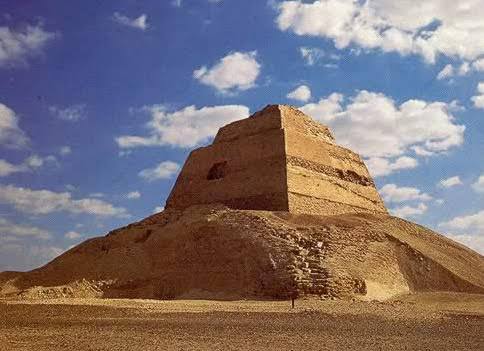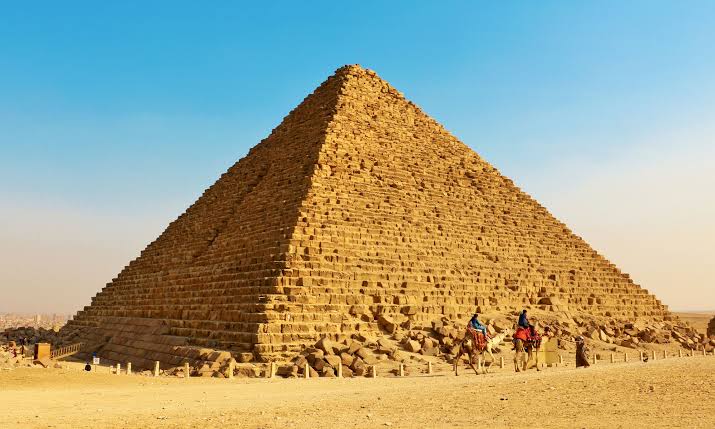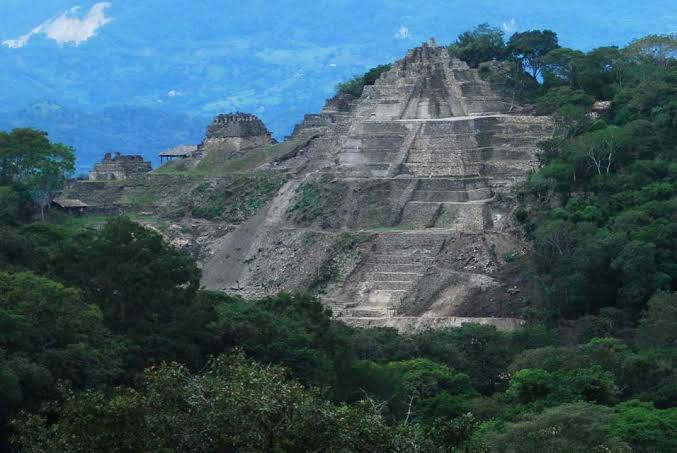

Pyramids are among the most recognizable and enduring icons of ancient civilizations. They are emblematic of architectural ingenuity, religious significance, and cultural accomplishments. Despite the fact that the Great Pyramid of Giza in Egypt is the most well-known pyramid in the world, there are a number of other large pyramids that are located on other continents. These buildings were constructed for a variety of functions, ranging from tombs to ceremonial centers, and many of them are still standing today as a tribute to the engineering talents of the people who built them.
List Of Top 10 Largest Pyramids In The World 2024
1. Bent Pyramid

One of the most fascinating and historically significant buildings in ancient Egyptian architecture is the Bent Pyramid, which is situated in the Dahshur necropolis south of Cairo, Egypt. Constructed during the Old Kingdom, it stands out from other pyramids due to its distinctive shape. The Bent Pyramid offers important insights into the architectural and engineering advancements of ancient Egypt and marks a turning point in the development of pyramid construction. Here, we examine this remarkable monument’s design, history, and significance.
2. Great Pyramid of Giza

Among the most famous and breathtaking constructions in human history is the Great Pyramid of Giza, sometimes called the Pyramid of Khufu or the Pyramid of Cheops. The biggest of the three pyramids forming the Giza pyramid complex is situated on Egypt’s Giza Plateau close to Cairo. Renowned for its sheer enormity, exact construction, and historical relevance, the Great Pyramid has stood for more than 4,500 years and still enthralls archaeologists, historians, and tourists from all around.
3. Pyramid of Khafre

One of the most well-known pyramids in ancient Egypt is the Pyramid of Khafre, sometimes referred to as the Pyramid of Chephren. The second-largest pyramid in Egypt and a crucial component of the Giza pyramid complex, it is located on the Giza Plateau, immediately south of the Great Pyramid of Giza. The Pyramid of Khafre is a highly significant historical, architectural, and cultural structure that was constructed for Pharaoh Khafre, the son of Khufu, the man who constructed the Great Pyramid. In addition to its immense size, it is well-known for its mysterious relationship to the Great Sphinx of Giza, which is located at its base.
4. Red Pyramid

One of the most significant and well-preserved pyramids from ancient Egypt, the Red Pyramid sits in the Dahshur necropolis just south of Cairo, Egypt. It is especially significant in the annals of Egyptian architecture since it marks the change from the early step pyramids to the smooth-sided pyramids that would eventually predominate over ancient Egypt. Designed for Pharaoh Sneferu, the Red Pyramid is regarded as the first actual pyramid and its creative design prepared the way for the following, more well-known pyramids including the Great Pyramid of Giza.
5. Great Pyramid of Cholula

The Great Pyramid of Cholula is an ancient wonder that is frequently overlooked in the shadow of the more well-known pyramids of Egypt and Mesoamerica. It is situated in the present-day town of Cholula in Puebla, Mexico. The Great Pyramid of Cholula is the largest pyramid in the world by volume, while the Great Pyramid of Giza in Egypt is renowned for its imposing height. For those interested in archeology and history, its vast size, extensive history, and cultural relevance make it an intriguing location.
6. Maydoum Pyramid

One of the less well-known but yet important pyramids in ancient Egyptian architecture is the Maydoum Pyramid in Egypt’s Faiyum Governorate desert. Usually eclipsed by the more well-known pyramids of Giza and Saqqara, the Maydoum Pyramid is evidence of Egypt’s early architectural technique development and pyramid building innovation. Unusual form, building history, and ultimate collapse of this pyramid provide insightful analysis of pyramid design evolution and the complexity of ancient Egyptian engineering.
7. Pyramid of Menkaure

The third and smallest of the three major pyramids on Egypt’s Giza Plateau, the Pyramid of Menkaure is sometimes eclipsed by the majestic Pyramid of Khafre and the tall Great Pyramid of Khufu. The Pyramid of Menkaure has great historical and architectural significance despite its comparatively tiny size. It represents the pinnacle of the grand pyramid-building era and provides important insights into the developments of ancient Egyptian architecture and royal burial customs as the last pyramid constructed in the Giza complex.
8. Pyramid of the Sun

One of the most amazing and mysterious constructions from pre-Columbian America is the Pyramid of the Sun, found in the ancient Mesoamerican city of Teotihuacan in central Mexico. One of the biggest pyramids in the Western Hemisphere and the biggest in the city, the Pyramid of the Sun continues to be a symbol of Teotihuacan’s architectural creativity and power. Though Teotihuacan was deserted long before the Spanish arrived, its legacy lives on in the Pyramid of the Sun, which still enthralls both academics and tourists.
9. Pyramid of La Danta

One of the largest and most impressive pyramids in the Americas is the Pyramid of La Danta, which can be seen in the ancient Maya city of El Mirador, which is situated in the northern region of Guatemala. La Danta is a massive edifice that provides unique insights about the engineering, culture, and power of the ancient Maya civilization. Despite the fact that it is not as well-known as the pyramids of Egypt or the famed Mesoamerican pyramids in Mexico, La Danta is rather impressive.
10. Tonina pyramid

One of the most remarkable and important structures of the ancient Maya civilization is the Tonina pyramid, which is situated in the Mexican state of Chiapas. This enormous building, which was a part of the ancient metropolis of Tonina, provides a rare window into the political, cultural, and architectural accomplishments of the Maya. In contrast to the more well-known pyramids found in other Maya towns, such Tikal or Chichen Itza, the Tonina pyramid continues to stand as a testament to the strength and intricacy of one of the lesser-known but most significant hubs in the Maya civilization.
Leave a Reply